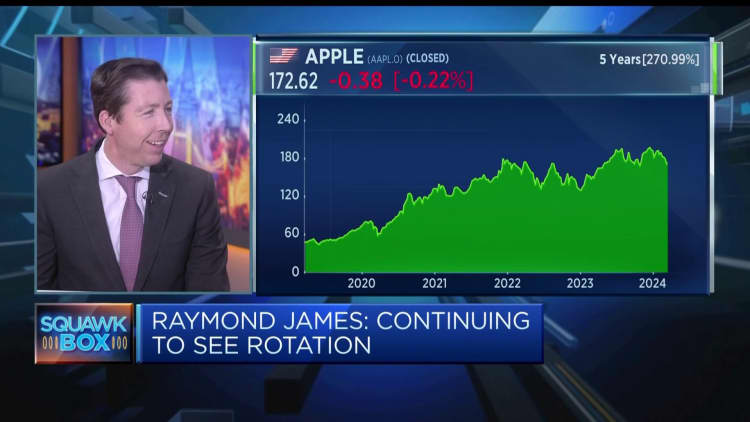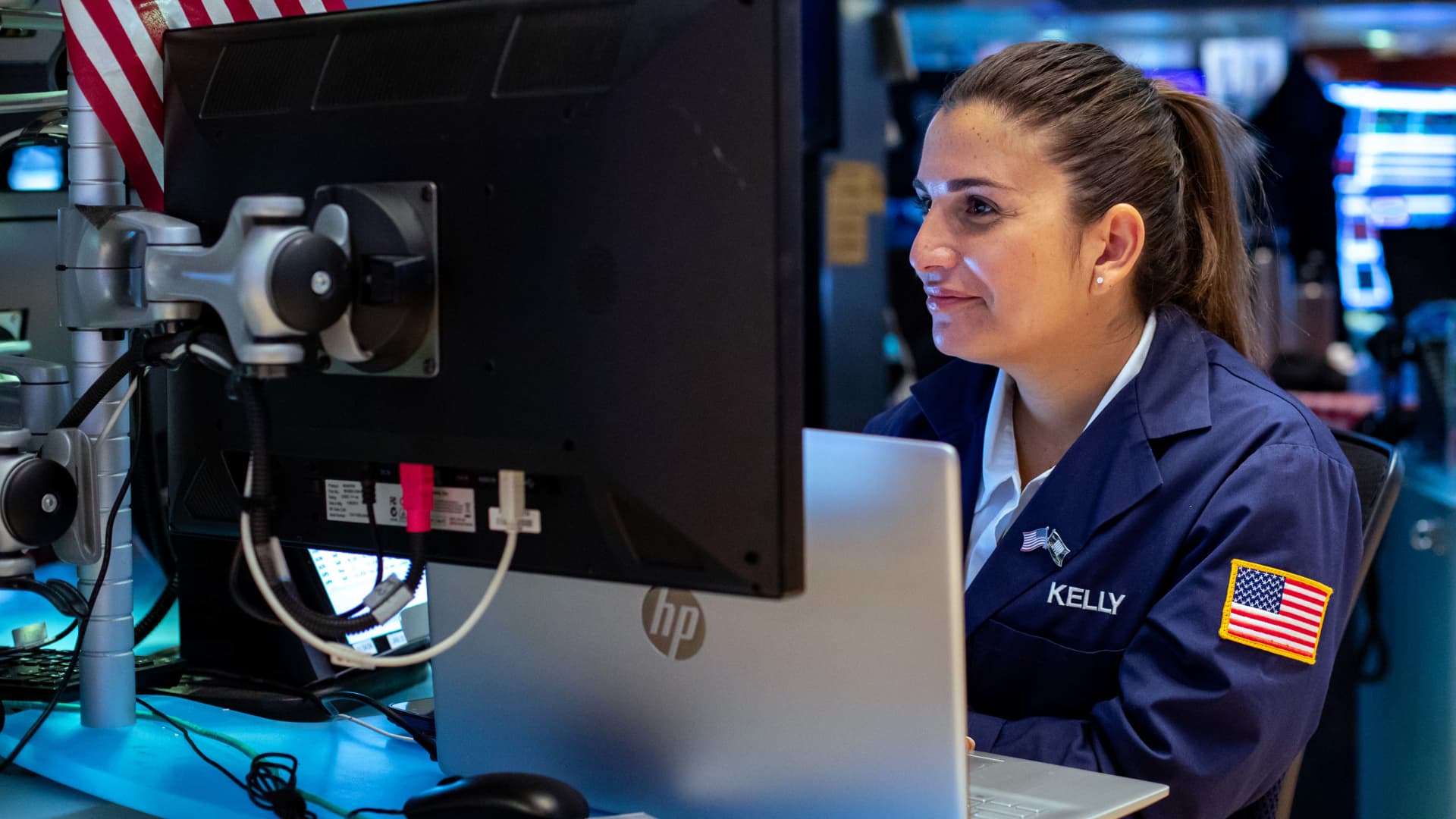Traders work on the floor of the New York Stock Exchange
NYSE
Investors should disregard concerns over high valuations and focus on growth in what is now a “stockpicker’s market,” according to Matt Orton, chief market strategist at Raymond James Investment Management.
The S&P 500 closed out a two-week losing streak on Friday, but Orton told CNBC that stock market gains are broadening and brief pullbacks should be used “opportunistically.”
Much of the significant rally over the last 18 months has been driven by the so-called “Magnificent 7” megacap tech stocks, but they have begun to diverge.
Apple is down 10%, while Tesla is 34% lower. Microsoft, Amazon and Meta are up 11%, 15% and 37% respectively. Nvidia, meanwhile, is 77% higher and Alphabet is little changed, up 1%.
“We’re back to a stockpicker’s market – idiosyncratic risk is finally being rewarded again and that, to me, is most important. It means that you have the opportunity to diversify your portfolio and actually lean into what works and lean out of what’s not,” Orton told CNBC’s “Squawk Box Europe” on Monday.
“I think the fact that [Apple and Tesla] have fallen behind, whereas your Alphabet’s kind of middling and the rest of the Mag 7 are doing well, it just speaks to the fact that the fundamentals matter once again, and there’s plenty of strong fundamentals not just in the Mag 7 but look at industrials, financials are actually starting to improve.”

Commentary around the market rally has been focused on the high valuations of U.S. stocks. Nvidia trades at around 35 times forward earnings, according to FactSet data, and the broader Magnificent 7 trades at an average of around 34 times forward earnings. The S&P 500, meanwhile, is at a historically high average of 21 times forward earnings.
The forward price-earnings (P/E) ratio divides a company’s share price by its expected earnings per share. Traditionally, a high P/E ratio is seen as an indicator that a stock could be overvalued.
However, Orton argued that historical comparisons are irrelevant as today’s stock market composition is so different.
“The main message I give to our clients is: don’t worry about the optics, don’t worry about what the market looked like 20, 30 years ago, because the market itself has become so much ‘growthier’ — not just in tech, but in industrials, consumer discretionary, certain parts of health care — and you pay a higher multiple for growth companies. So I don’t want to hear that the market should be trading at 17 times earnings. Why? Why shouldn’t it be trading at 18, 19?” he said.
Growth stocks are expected to produce above-average earnings growth, often due to their position in rapidly developing industries such as tech and AI, or because they boast unique offerings that provide a competitive advantage (such health care companies with highly sought-after weight loss drugs).
“I fully think that the market could push 20, 21 times, and that’s a perfectly fair multiple for us to pay. It’s all about earnings growth and it’s all about leaning into where those fundamentals are, and trying to avoid the parts of the market where you don’t have a positive inflection in earnings,” Orton said.
“And if you do that, no matter what the valuation is, you can grow into it, and I think that’s the main message for investors, is ‘find growth.'”

